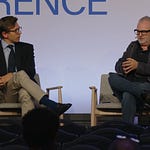“Supply chains win wars. It’s not hyperbole. It’s just history,” said Resilience’s Matt Burns during the introduction to his Resilience Conference 2025 panel on supply chains. “It’s an uncomfortable truth that Europe must face right now.”
“Is Europe and NATO’s supply base resilient enough to withstand a large-scale conflict?” he asked Robin Dechant, partner at General Catalyst and Julian Senoner, CEO at Ethon.ai. These panelist are uniquely situated to answer this loaded question.
“The level of urgency probably was never higher than right now,” said Dechant. “I think if you think about the whole industrial base in Europe, it has been really strong in some of the industries where Europe has [historically] been strong like automotive, but I think in some of the emerging industries, we’re definitely falling behind.”
“Sometimes things are so urgent, you can’t wait,” he said. “But I do think what’s important now that we strategically think about like what should we actually bring back to Europe and manufacture here and I think the only way to actually bring the manufacturing is by automation.”
From the factory floor, the constraint is people, not code. Senoner believes that the answer is AI, even in manufacturing.
“The first industrial revolution with the steam engine, second one with electricity and the third one with computerization of factories,” he said. “And I think we are now on the brink where we will see mass adoption of AI in factories to streamline operations and to help manufacturers be more effective and efficient. And, interestingly, that’s mostly a people problem and not a technology problem.”
On what works, the panelists drew a line between “point improvements and system improvements.” Point fixes include a computer vision system that automates visual checks or predictive maintenance, but the real gains come when you aggregate data from different sources and then you run AI on top of that across the manufacturing stream.
“One of our largest customers is Lindt, the chocolate producer. And whenever they produce chocolate, at some point the quality might deteriorate. So chocolate might break, it might stick. And that costs a lot of money over many, many production lines. So what we do is essentially we look into all this data and we use these causal graphs to investigate how these parameters relate to each other and we can give recommendations automatically,” Senorer said, taking an example from another industry his company is in involved in. “This way customers typically save millions across their factories, but also, and for the topic of resilience,make it worthwhile producing in Europe or the US, where it’s much more expensive to produce and where you need to be efficient and effective when producing.”
The investment view follows the same line. Reshoring only works if costs fall, so back automation and full stack companies that can own their supply and become key vendors. Capital must fit the job.
Founders are advancing despite headwinds. Senenor declined an early acquisition for a previous company, formed a new company in manufacturing, and secured Siemens as the first customer. The model scaled in measured steps. The practical lesson from his work is to build where the pain is acute and the buyer is close.
Talent is returning as well. Engineers with time at SpaceX and Tesla are coming back to Europe to build firms and teams, the panel said. This movement raises the floor on process discipline and leadership. Investors are responding to clear problem statements, credible plans, and early proof on real lines.
The conclusion is clear: Europe will not compete on price, but it must compete on skill, scale, and speed. Time is tight, said the panelists, and action taken now will compound in the form of better and strong supply chains in Europe.









